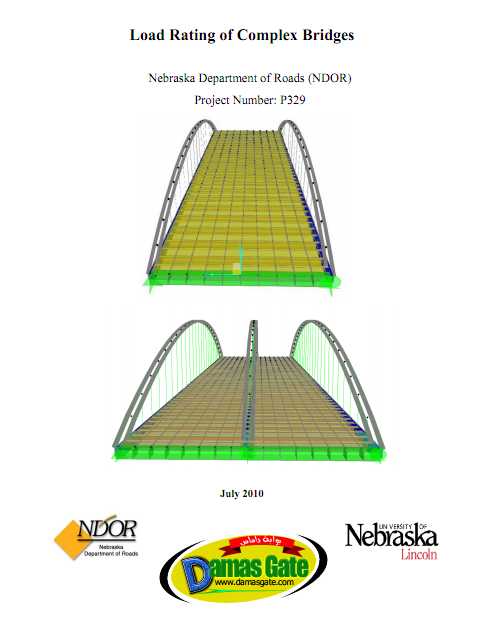Load Rating of Complex Bridges
SECTION 1: INTRODUCTION
1.1 Background
The National Bridge Inspection Standards requires highway departments to inspect, assess the condition, and calculate load ratings for structures defined as bridges and located on all public roads. Load rating of bridges is performed to determine the live load that structures can safely carry at a given structural condition. According to the Recording and Coding Guide for Structure Inventory and Appraisal of the Nation’s Bridges, bridges are rated at three different stress levels, referred to as Inventory Rating (items 65 and 66 of Structural Inventory and Appraisal sheet), Operating Rating (items 63 and 64 of SI&A sheet), and Posting Rating (item 70 of SI&A sheet). Inventory rating is the capacity rating for the vehicle type used in the rating that will result in a load level which can safely utilize an existing structure for an indefinite period of time. Inventory load level approximates the design load level for normal service conditions.

Operating rating will result in the absolute maximum permissible load level to which the structure may be subjected for the vehicle type used in the rating. This rating determines the capacity of the bridge for occasional use. Allowing unlimited numbers of vehicles to subject the bridge to the operating level will compromise the bridge life. This value is typically used when evaluating overweight permit vehicle moves. The posting rating is the capacity rating for the vehicle type used in the rating that will result in a load level which may safely utilize an existing structure on a routine basis for a limited period of time. The posting rating for a bridge is based on inventory level plus a fraction of the difference between inventory and operating. Structural capacities and loadings are used to analyze the critical members to determine the appropriate load rating. This may lead to load restrictions of the bridge or identification of components that require rehabilitation or other modification to avoid posting of the bridge (DelDOT 2004).
Download
http://s18.alxa.net/s18/srvs2/02/002...ex.Bridges.rar